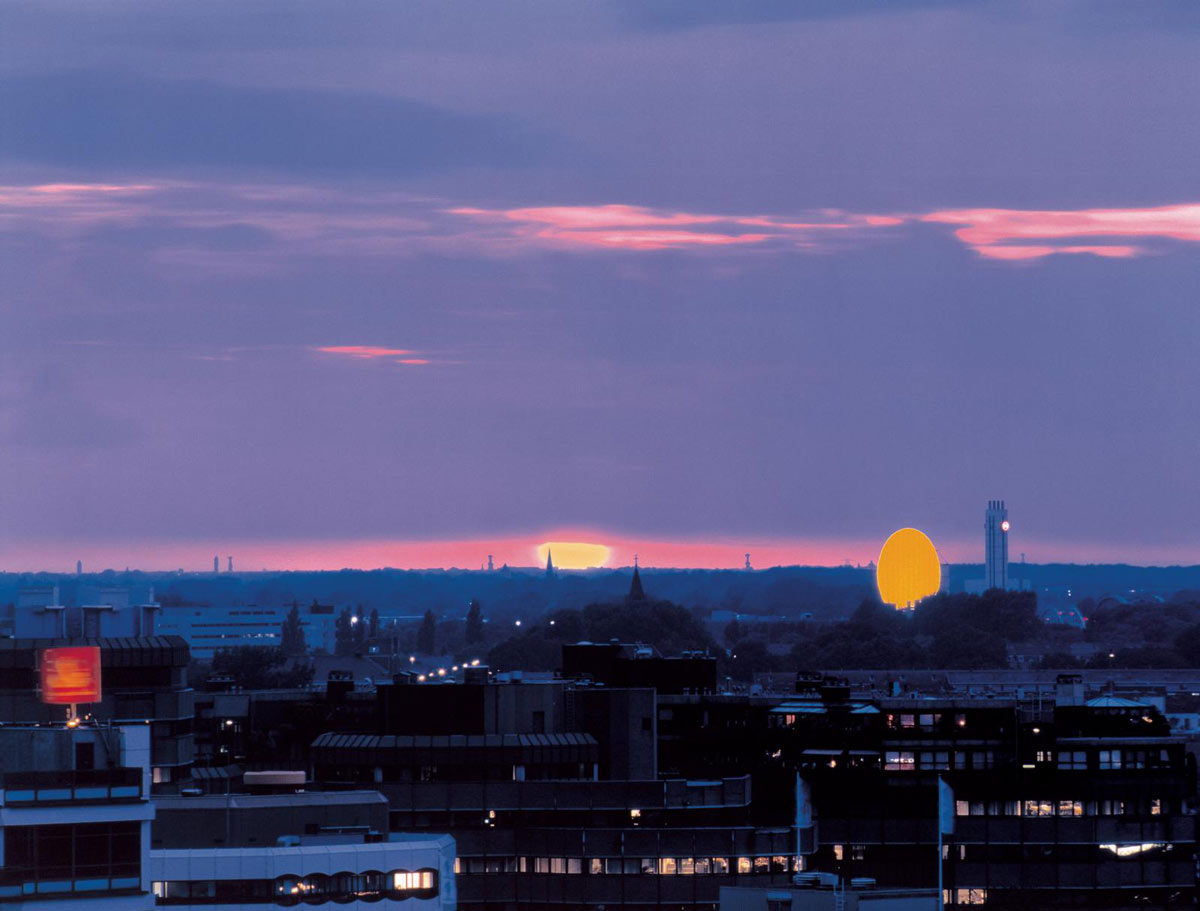Think with Me about Your Extension of Now
Cultivating a collective sense of time and space
Olafur Eliasson

“Now” has been stretched to last longer and longer. We–and I mean the human race–have, unlike most animals, the ability to link one moment to the next, creating our sensation of presence. Time flows continuously in one motion, so to speak, with each moment naturally related to the next. Husserl added that our expectations for the coming moment and the memory of the one just passed are all members of our “now.” If not, our remarkable ability to orient ourselves would probably not have developed to this extent. Husserl’s assumption was that “now” can only be linked to a subject whose expectations and memory set the parameters of experience and orientation—in a space.
Still thinking with me, we can say that my understanding of our time is necessarily within my own time, so that my now is inside of yours, or, finally, your now is my surroundings (and vice versa). So since our “now” has been extended in time, a discussion about “here” must arise—in particular when talking about spatial issues such as your surroundings.
The familiar “now and here,” also known as “nowhere,” might just as well be “now and there.” Since the subject certainly moves around (in a space), there should be no doubt about our ability to orient ourselves not only in the nearby past and future, but also in the space that will enter in a moment or is on the map of yesterday’s activities. Our society is laid out for this extended orientation anyway, being organized as it is out of the principles of predictability and avoiding surprises (think about traffic safety). Our surroundings are organized to be moved in without necessarily just being “here” or “there” but rather with a sense of coming from up there, being here, and soon being down there.
Imagine if we were only to orient ourselves in Barnett Newman’s “Nowhere.” Our brain would become aphasic like a strobe lamp, experiencing our world as an infinite number of suspended static moments. This does not, like Newman assumed, bring you closer to some shared primordial state with your strange certainty still kept. In fact there is nothing outside of us, only cultural constructs. Your time and my time. Even Einstein’s desire to encapsulate us in his objective time was nothing but a then-practical cultivation of our surroundings. Practical in the sense that you now know that time is gravitational, so that when standing on top of the Twin Towers in New York, so-called time is one second longer in a hundred million years compared to standing on the street. The practical benefits of our collective cultivation of our surroundings is beyond discussion. Otherwise, we would be like Jim Carrey’s Truman, I suppose.
So how long is “now” and where does “there” end? One frontier of “now and there” is our weather forecast, with all its weather people and predictions. Meteorology, in feudal times a matter of life and death, originated from a real need due to its ability to prolong the “now” to include tomorrow’s weather, taking our much too suspended reality for a pleasant ride into the future. Like a time traveler, weather predictions are able to get a small part of the yet abstract future and include it in our cultivated sense of space.
Turning farmers’ sensitivity into science, complexity and unpredictability have cultivated the largest off all collective awarenesses—the weather. If anything is collective, the weather map outscores it by far. The only competition is TV reports on the most recent increase in the stock market curves. In the western world as we know it, the relevance of weather forecasts has decreased proportionally with the decline in the importance of the agricultural economy. On network news stations, the stock market news, mostly right before the weather, has eaten its way into the ever-shortening and faster-spoken weather forecasts. And as you notice, the daily stock update followed by the weather forecast forms a perfect (time)frame of reference for the fact that the recent past and future belong to your now. The recent past (the daily state of the stock markets) and the immediate future (the prediction of the weather) forms today’s perfect collective, cultivated Now. “Now” is eating calendar pages and digesting the upcoming weather into a daily dump of stock rates.
Cultivation of a collective sense of time and space works, as we see, through representation. The weather forecast is our mediated experience—thermostats letting us know if we are freezing, or the wind-meter telling us if and from where the wind is blowing. Through the representational layers, our sensation of time and space (now and there), its tactility evacuated, for instance, by TV and thermostats, enables us to orient ourselves more productively as long as we are aware of the level of representation we are at: that the temperature is shown by the thermostat and not by our senses feeling a chill on the skin. Mediations can be infinite and only form a threat when you mistakenly believe that time and space are objective. Like when you are elsewhere and assume you are here. Just like Truman.
Olafur Eliasson is an artist based in Berlin.
Spotted an error? Email us at corrections at cabinetmagazine dot org.
If you’ve enjoyed the free articles that we offer on our site, please consider subscribing to our nonprofit magazine. You get twelve online issues and unlimited access to all our archives.